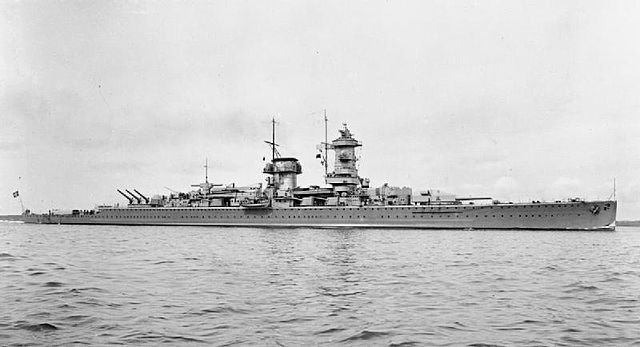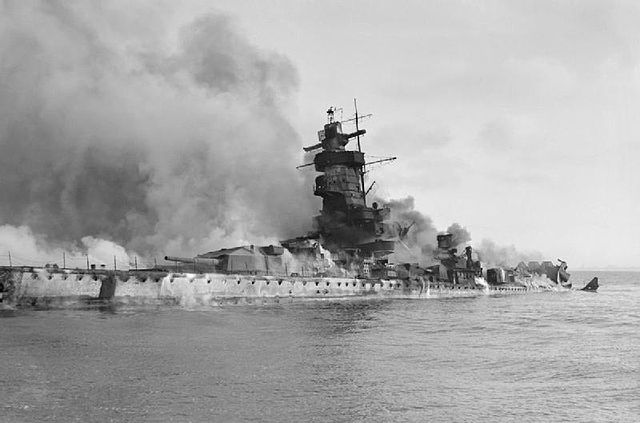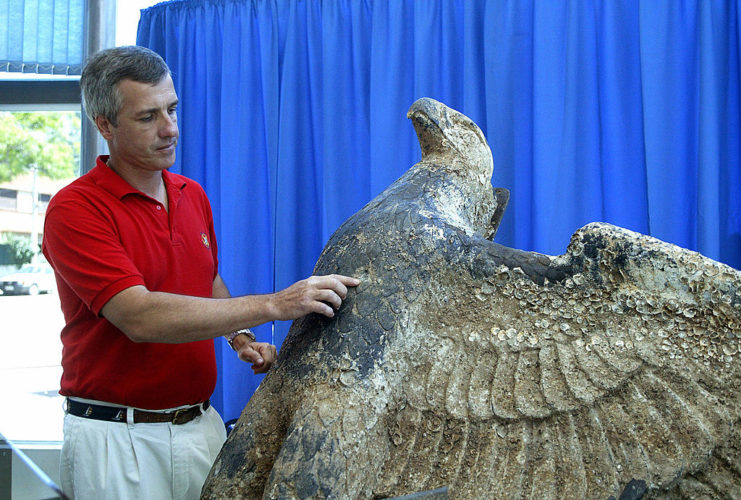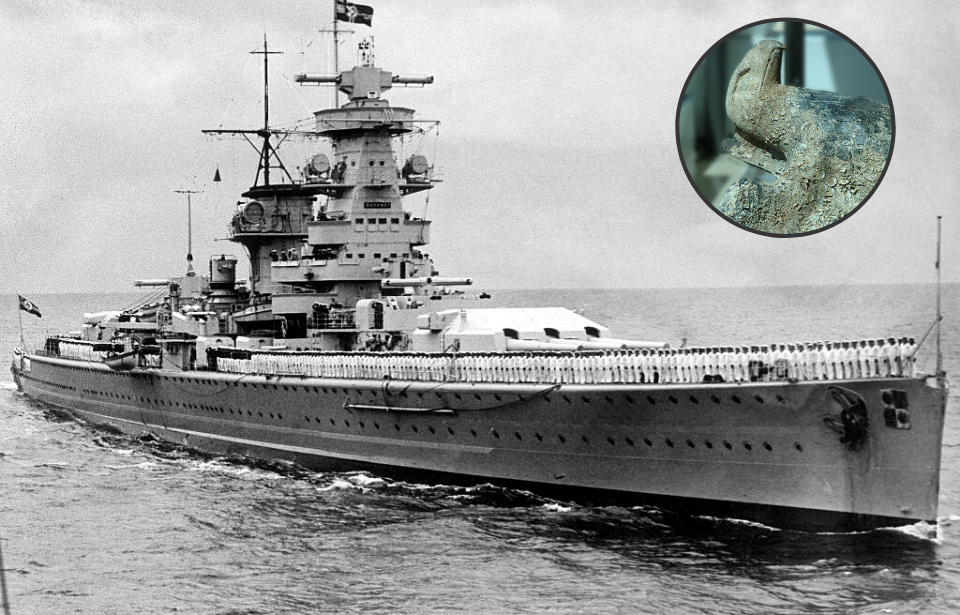After a years-long legal battle surrounding its sale, the Uruguayan Court of Appeals has ordered that an 880-pound bronze eagle from the stern of the German warship Admiral Graf Spee can be sold. The process had been put on hold following fears it could be purchased by those with sympathies to the Third Reich.

The Graf Spee was one of three Deutschland-class warships developed by the Weimar Republic between 1929 and 1936. They had the speed of a cruiser and were more heavily gunned than one, leading the British to refer to them as “pocket battleships.” Their design made them perfect for commerce raiding, which led the Graf Spee to be deployed to the South Atlantic following the outbreak of World War II.
Between September and December 1939, the Graf Spee managed to sink nine Allied merchant ships. Her first (and last) naval battle came off the coast of Uruguay with the Battle of the River Plate on December 13, 1939. After being spotted by three British cruisers, it became engaged in a firefight, causing substantial damage to the Allied vessels. However, it didn’t make it out unscathed, and had to sail to the port in Montevideo.
Unable to sail into the open ocean, but not wanting the ship to be captured by the Royal Navy, the ship’s captain, Hans Wilhelm Langsdorff, ordered it to be scuttled. After ensuring his crew had been safely transferred to Buenos Aires, Argentina, he had the ship sunk, after which he died by suicide.
Following the Graf Spee‘s sinking, the British government used a local engineering company to purchase the salvage rights. They were after the radar range finder, due to the accuracy of the ship’s guns during the Battle of the River Plate. Its recovery later helped the Royal Navy develop numerous countermeasures.

The vessel remained off the coast of Montevideo for decades. In February 2004, the decision was made to remove it from its location below the water, as it was creating a navigation hazard. Two brothers, Alfredo and Felipe Etchegaray, agreed to conduct the removal and cover the costs. Two years later, the ship’s 880-pound bronze eagle was recovered.
Following its recovery, the eagle was on display at a local hotel, until protests forced it to be placed into storage. In 2019, a lower court ruled that Uruguay should “dispose” of it, so as to pay the brothers what they were owed for their services, as they’d been permitted to sell any items they recovered from the wreck.
The bronze eagle was scheduled to be sold at auction in 2020 for up to $26 million, with Alfredo Etchegaray saying at the time that numerous parties had expressed interest. However, complaints soon arose over the exhibition of “Nazi paraphernalia,” with fears arising that it would be purchased by white supremacists or Third Reich sympathizers. As such, the sale didn’t proceed, and the adornment’s future was left in limbo.

In December 2021, the Uruguayan Court of Appeals ordered the country’s government to sell the eagle. Daniel Sielecky, a 64-year-old boating aficionado from Punta del Este, Argentina, has expressed interest in purchasing it. Speaking with local news outlet Correo de Punta del Este, he said he planned to “immediately blow it into a thousand pieces,” with any remaining pieces being “pulverized. There will be nothing left.”
Regardless of who ends up purchasing the relic, Uruguayan Defense Minister Javier García has said the country will guarantee it doesn’t become the object of worship or negative publicity.
